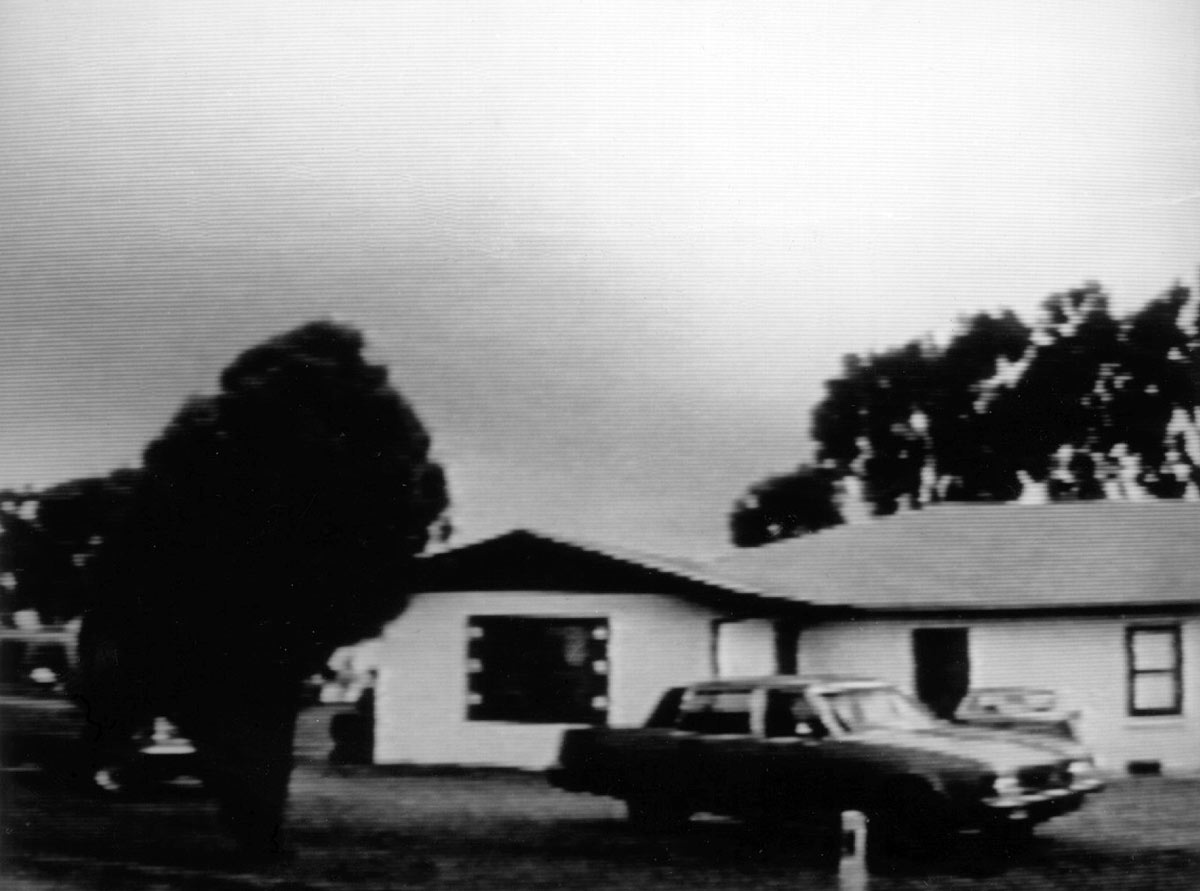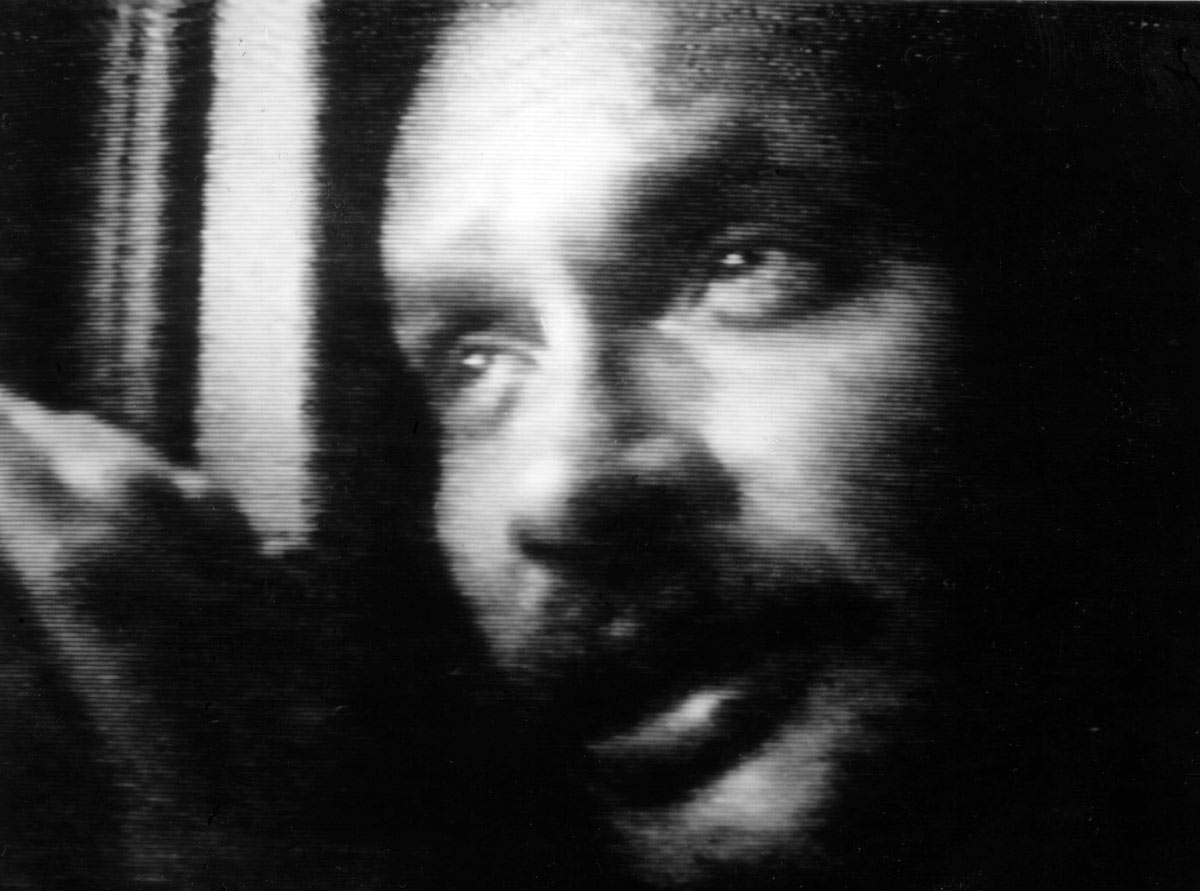Storm Squatting at El Reno
George Kuchar in the elements
Jesse Lerner
In the late spring of each year the Great Plains states of the US experience a season characterized by destructive tornadoes of awesome force. This is the time of year when the underground film- and video-maker George Kuchar leaves his San Francisco home to make his annual pilgrimage to the nidus of these frightening storms. As hail and twisters batter the heartland, Kuchar holes up with his video camera in an inexpensive motel room somewhere in the vast prairies of Oklahoma, and waits. The result is an ongoing series of first person, no-budget videos called the Weather Diaries (1986- ), encompassing both a numbered series (Weather Diary #1, 1986; Weather Diary #2, 1987; etc.) and single titles (Sunbelt Serenade [part 1…Oklahoma], 1993; Season of Sorrow, 1996), which document these annual visits.
The Weather Diaries, ranging in duration from just under a quarter of an hour to feature length, are structured by two parallel narratives, two central themes: Kuchar’s body, especially his digestive tract, and the severe weather conditions that bring softball-sized hailstones and ominous cloud formations. As the most dramatic meteorological activity takes place in the distant heights of the troposphere, Kuchar can only look heavenward and document the changing manifestations on the ground. His weather watch is restricted to shooting the torrential downpour through the motel window, with running commentaries added (such as “Oh, boy!”). Calling himself a “storm squatter,” he repeatedly contrasts this vigil with the more dramatic feats of the “storm chasers”: specially trained pilots who fly into the eye of such storms to gather scientific data. Closer than the climactic upheavals going on within the clouds are those eruptions transpiring simultaneously in Kuchar’s gut. Reacting in unpredictable and at times violent ways to the steady diet of greasy, high-carbohydrate foodstuffs from the local fast food outlets, Kuchar’s bowel movements and indigestion, documented by his camera and sardonic voice-over, offer a counterpoint to the storms. The two narratives—digestive and meteorological—converge periodically, as when the low-pressure systems cause odors to leak from the motel’s septic tank. Kuchar describes this phenomenon in Reflections from a Cinematic Cesspool, the memoir which he and his brother co-authored: “One could smell in great horrific detail what fermenting atrocity lay beneath the motel complex whenever a large storm threatened and the barometric pressure plummeted. Those vituperative vapors caused greater consternation than all the devil winds in nature’s arsenal.”[1]

At times, when the weather clears, Kuchar ventures out into the world of the Midwest. He befriends a handful of inhabitants and fellow visitors, who share pieces of their lives with him. A retailer of hair care products walks him through a display of her wares, narrating the applications of each product. Her son graduates from junior high school, and Kuchar attends the ceremony. But more often than not, Kuchar is alone, channel surfing, longing for the well-favored water polo players pictured in a sports magazine, and (always) performing his inimitable self.
Kuchar’s career as a media artist began at age twelve, when he and his twin brother Mike began filming 8mm recreations of B-grade 1950s Hollywood horror films on the roof of their Bronx apartment building. With a cast of kids and parents recruited from the neighborhood and dressed up as lurid stars in Goodwill costumes, the two made their best efforts to recreate the Saturday matinee science fiction and horror films that so fascinated them. In the early 1960s, these queer pubescent fantasies came to the attention of the downtown avant-garde through the efforts of experimental filmmaker and impresario Jonas Mekas. For Mekas and company, the Kuchars were authentic cine-primitives, intuitive naïfs who achieved greatness in their profane innocence. Their early short 8mm films, such as Pussy on a Hot Tin Roof (1961) and I was a Teenage Rumpot (1960), gained cult status underground. Mekas’s periodical, Film Culture, printed Kuchar’s declarations on filmmaking, in which he stated:
Many people ask why Mike (my brother) and I make movies, and I’m at a loss for an answer. My tongue cannot express what my heart knows as truth. Like the great sphinx of Egypt, I stand deaf and dumb for people to throw camel dung at. Well I’ve had enough of their camel dung! From the mouth that stretches between my cheeks, I belch forth the rotten curse of Hepshetsut on them. May their eyeballs pop and run down their face like gefiltah [sic] fish jelly. And to all those self-righteous holy spawn who have scorned me, I can only say this: Your rotten and fruitless flab should drop dead in a ditch and serve as nourishment for albino fungi.[2]

Following their “discovery,” the Kuchars’ films played at numerous festivals and at art houses like New York’s Bleecker and Thalia, and the twins were canonized as favorite outsiders within the American cinematic avant-garde of the 60s. Though their earlier work was in 8mm film (and after 1965, 16mm as well), in the mid-80s George Kuchar made the transition from film to 8mm video. This change in technology allowed for a staggering acceleration in the pace of his already prolific output of work. Some of these continue in the parodic B-movie mode of his earlier collaborations with his brother. Often made with his students from the San Francisco Art Institute, these affectionate tributes remake melodramas and television sitcoms with inept actors and no production values. Other videos, of which the storm squatting tapes are a subset, are in a more diaristic voice.
Early on, George showed an interest in the weather, especially its most extreme and inclement conditions. George’s first solo effort (after co-directing several films with his brother), A Town Called Tempest (1961), features a bargain basement special effects sequence in which a twister destroys the eponymous hamlet. Similarly the thunderstorms in A Reason to Live (1976) and Wild Night in El Reno (1977) anticipate the twister obsession of the Weather Diaries. This interest also informed his choice of day jobs. Trained as a commercial illustrator at a vocational high school, in the early 70s Kuchar created sketches and cartoons to augment the New York City television weather report.[3]
In spite of their early acceptance by what was to become the Anthology Film Archives set, the Kuchars have always retained a peripheral position in that group, more analogous to that of the juvenile class clowns than full-fledged adult members. Similarly, despite the fact that he has made scores of intimate video diaries, George occupies a problematic place within the world of documentary. When he screened his Weather Diaries at the Robert Flaherty Seminar (a prestigious documentary showcase) in 1996, he was attacked by indignant audience members as the embodiment of white male privilege. That disastrous reception, as recorded by Steina Vasulka, later appears in his video The Vermin of the Vortex (1996), in which cruel space aliens kidnap him and transport him back to the Flaherty Seminar.
There is a peculiar irony in these accusations of privilege. The videos are made with the most accessible sort of equipment, and surely cost little more to make than the cost of his modest Oklahoma motel room. The earlier titles in the series are edited entirely in-camera, eliminating post-production and speeding-up the already abundantly fruitful productivity. In the later works from the series, Kuchar often makes indulgent use of digital effects of dubious taste available with many consumer models of video equipment, such as heart-shaped frames for images of his late, beloved cat, as well as canned music from an appallingly generic sound-effects library. While the end result may fly in the face of all we have been taught about good video-making, good taste, or good meteorology, the Weather Diaries stand testimony to Kuchar’s lurid vision of these frightening Midwestern storms.
- George Kuchar and Mike Kuchar, Reflections from a Cinematic Cesspool (Berkeley, CA: Zanja Press, 1997), p. 82.
- George Kuchar, “George Kuchar Speaks on Films and Truth,” Film Culture no. 33 (Summer 1964), p. 14.
- Sheldon Renan, An Introduction to the American Underground Film, (New York: E. P. Dutton and Company, 1967), p. 161.
Jesse Lerner is a filmmaker currently working on The American Egypt, an experimental documentary about the history of the Yucatan.
Spotted an error? Email us at corrections at cabinetmagazine dot org.
If you’ve enjoyed the free articles that we offer on our site, please consider subscribing to our nonprofit magazine. You get twelve online issues and unlimited access to all our archives.